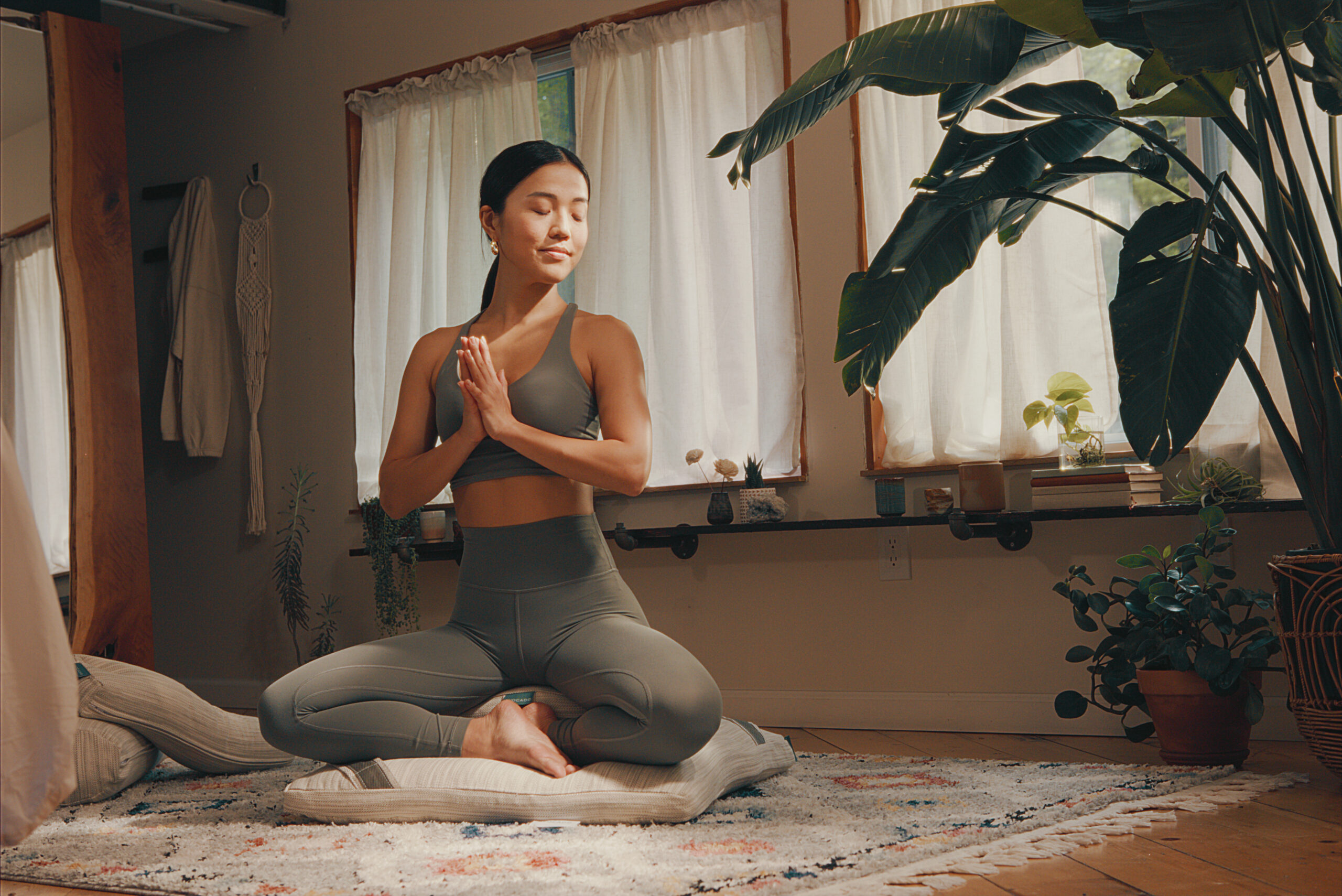Reduce stress, calm your mind, and improve sleep with a style of meditation that works with your routine.
From the moment we wake up, our minds are inundated with thoughts about what we need to do and where we need to be. As we navigate our overwhelming responsibilities, to-do lists and the surprises sprinkled in between, meditation can bring us a moment of calmness amid life’s hustle and bustle.
Meditation is a popular yet simple antidote to stress while promoting overall well-being. When we think of this ancient practice, the image that often comes to mind is someone sitting cross-legged in silence for hours. However, there is a diverse array of other ways to achieve a calm state of mind.
When I started my meditation journey years ago, my mind wandered constantly and sometimes I would even doze off – all of which are common experiences shared by new and experienced practitioners alike. Determined to deepen my practice, I attended a weekend retreat where I was introduced to walking meditation. As I navigated the stone path in a Zen Garden, I had an “aha” moment – the movement helped me to connect my mind to my body and to stay present.
Now as a parent of two young children, finding a peaceful break is less likely than discovering Lego pieces and food on the floor. However, by incorporating the concept of a walking practice, I have been able to add a dose of serenity into my steps whenever possible.
As we face ever changing priorities and routines, finding one or a few techniques that work for you is key to maintaining a consistent practice.

Read more: Our Favorite Meditation Apps
To reap the most benefits out of your meditation, a daily dose of mindfulness is the most effective in reinforcing focus and positivity. For example, meditating a few minutes per day outweighs a weekly hourly session. Taking a moment to set your intentions and remind yourself of why this is a worthwhile activity can also increase the likelihood of sticking to your practice. If you need some convincing, there are many benefits that are backed by science, including reduction of stress and anxiety, improved sleep and pain management.
Meditation can also be our protection against ailments. According to Harvard Health, by lowering blood pressure and strengthening the immune system, practicing meditation can improve heart health and prevent other illnesses. And the list doesn’t end there. Dedicating a few minutes to mindfulness can improve cognitive abilities, such as sharpening your focus and increasing creativity.
A sitting practice may not be your cup of tea, but there are different approaches that can ease you into the practice – and it’s not always done in solitude or silence. Whether you’re ready to embark on a restorative journey or want to get back into a regular relaxation routine, here are five types of meditation to start with or to supplement your current practice so you may discover mindfulness as you carry on throughout your day.
Feel a little down and need a pick-me-up? Try a loving-kindness meditation for a boost of positivity. Also known as metta meditation – mettā means benevolence and good will in Sanskrit or Buddhist terms – this practice is intended to cultivate compassion and empathy towards all living things, including ourselves. This practice has been proven to quiet our inner critic which in turns fosters self-acceptance. Once you settle into a comfortable and relaxed position, repeat peaceful phrases that induce warmth and positivity. Some common phrases are: “May I be happy. May I be well. May I be peaceful and at ease.” You may also wish to bring up an image of someone that you wish to send the good vibes to, perhaps a friend, your pet or someone you’ve had a conflict with recently. Freeing yourself of negative thoughts and energy will open your heart to more joy.
Mindfulness is a popular technique that trains your mind to stay present and pay attention to your thoughts without judgement. If you enjoy creative expression, mindful coloring can help you get into the zone. Take extra care to notice the movements of your hand and physical sensations of your body. By observing the colors and staying within the lines, you can block out external distractions and achieve a state of relaxation. In a study that compared mindful coloring to lovingkindness meditation, practices were found to have equal anxiety-reducing benefits. In fact, just five minutes of coloring can have the same effect on the brain as an hour of conventional meditation. Not only is this activity low-budget and all-age friendly, but you can also share the experience with a friend or family member. So, pick up a coloring book at a bookstore or print out free pages online!

Read more: How to Live In The Moment
For those of us who are often on the go or prefer to be moving, we can find mindfulness in our movements. Recent research has also shown that dancing can directly improve mental health and enhance moods. If you have tried yoga and tai chi and are looking for something different, a freeform dance might be for you. You can practice alone while grooving along to a guided meditation video, or freestyling to your favorite tune. The saying, “dance like no one is watching,” applies here. Not only is it a fun way to practice mindfulness, but it can also challenge you to get outside of your comfort zone.
If you are finding it difficult to fall asleep, consider adding a sound bath to your practice. The soothing vibrations of music can transform your mind and body into a deep relaxation state. Unlike melodious music you typically hear, instruments like chimes, gongs and singing bowls are used instead to create a symphony of vibrations, which have a direct impact on our brain, organs and cellular function. Through these deeper and slower frequencies, the sounds can bring our bodies to a deeper relaxation and restorative state. Sound healing has deep historical roots around the world, including Greek and Indigenous cultures. In the modern world, sound baths can accompany a yoga class, sitting meditation or a wellness treatment. While most sessions are guided by a professional, thanks to technology, there are many online resources, such as apps like Third Ear and Water & Gong, that make it a low cost and accessible option for many.

Other than adding movement and music to your meditation, a walk in nature can also enhance your mindfulness training. Nature-based mindfulness is found to be superior to mindfulness conducted in non-natural settings, therefore increasing healing benefits to the body and mind. This form of outdoor meditation originates in Shinrin-Yoku, the Japanese art of forest bathing, which involves engaging all senses when immersing yourself in a natural environment. As you meander through the greenery, you are encouraged to observe your surroundings. Notice the scent of the leaves, listen to the sound of birds and touch the tree bark. By combining the health benefits of the forest and mindfulness, you will discover a serene sanctuary within yourself.
Read more: The Case For Moving Slowly
Have feedback on our story? Email [email protected] to let us know what you think!

Shop Pillows
The Essential Organic Pillow Collection
Gentle, breathable, non-toxic support.








